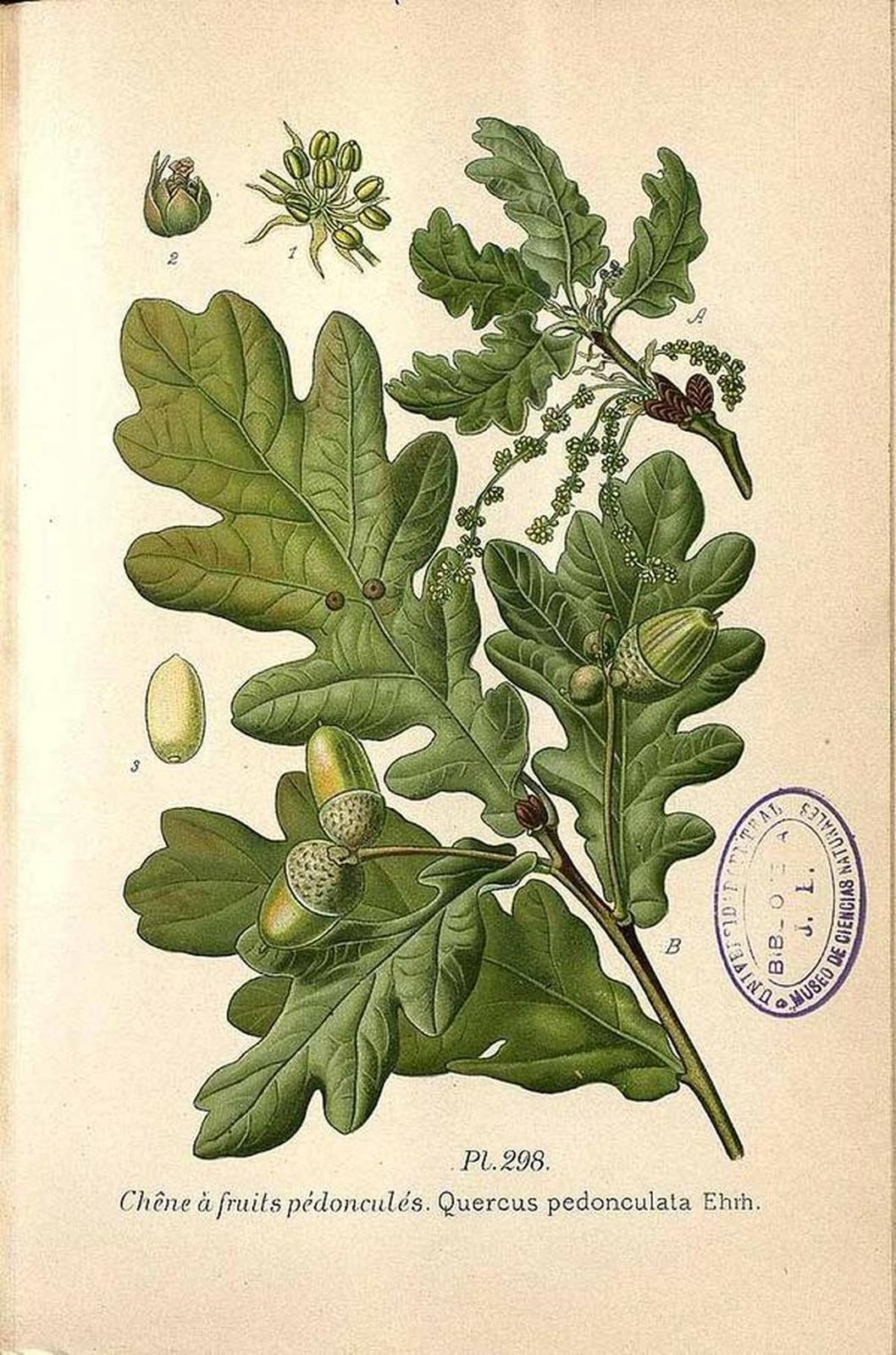Quercus robur L.
FagaceaeEl origen de la palabra quercus es incierto; algunos autores creen que desciende del céltico, más concretamente de kaer, bonito, y quess, árbol. En culturas ancestrales de Europa como la celta, habitantes de los bosques europeos y mitad septentrional de la Península Ibérica, los robles representan la fuerza y la nobleza y aún hoy son venerados y protegidos algunos robles famosos bajo los cuales se celebraban ceremonias y concejos. El árbol de Guernica, representado en la actualidad por un descendiente de otro que murió en el siglo XIX, pertenece a esta especie. Se trata de un árbol de gran longevidad que puede vivir hasta los 600 años. Su madera, de larga duración, es muy apreciada en la fabricación de muebles y en las construcciones navales: así, el navegante y escritor asturiano afincado en Sevilla en el siglo XVI, Juan Escalante de Mendoza, recomendaba su uso, si pudiese ser de una sola pieza, para la construcción de mástiles de carabelas como las que usara Cristóbal Colón. Durante las restauraciones del siglo XIX, aunque se emplearon cuartones de Flandes para techos, y caoba para las puertas, las constantes referencias a la procedencia de la madera, fundamentalmente de la zona de A Coruña (Padrón), lleva a pensar que la madera habitual debía ser de pino, de roble o de castaño. Un caso más de uso de la madera de un árbol presente en los jardines en la propia arquitectura del Real Alcázar.
Procedencia
Europeo/MediterráneoCalendario
Hábitat
Morfología
 Árbol
Árbol
 Esférica
Esférica
 Pinnada
Pinnada
 Ovada
Ovada
 Obovada
Obovada
 Alterna
Alterna
 Dentado
Dentado
 Lobado
Lobado
 Auriculada
Auriculada
 Obtuso
Obtuso
 Caduco
Caduco
